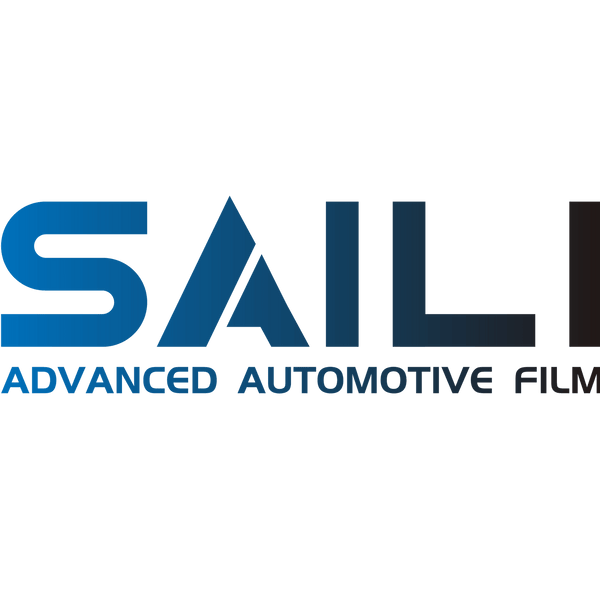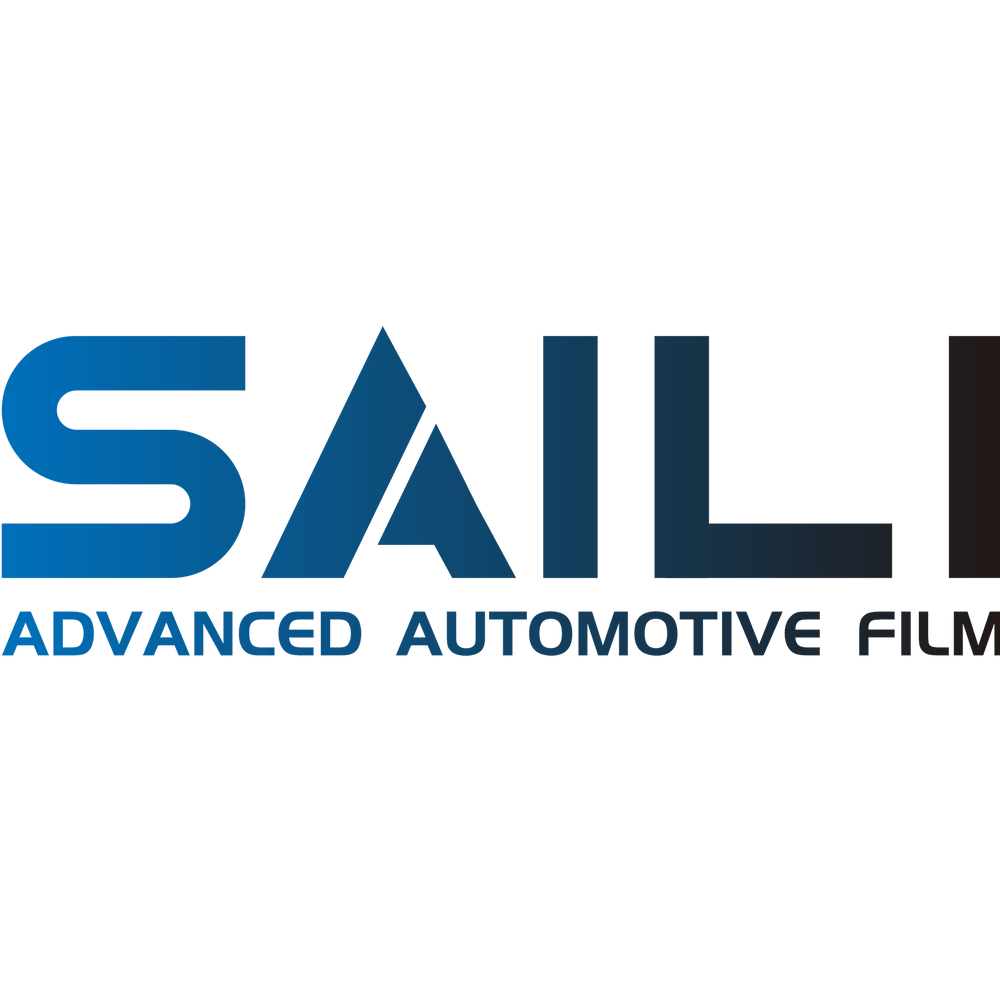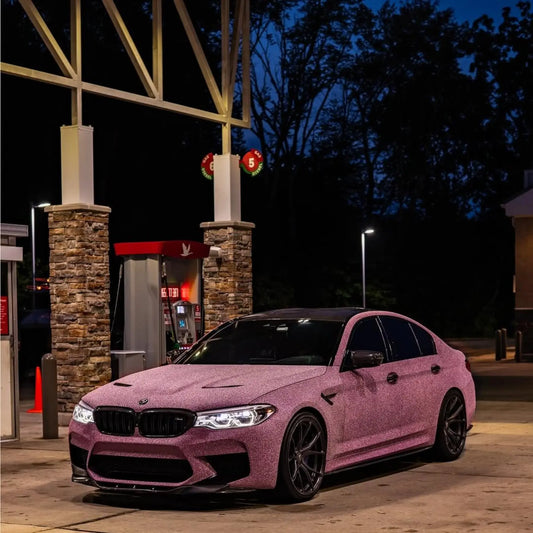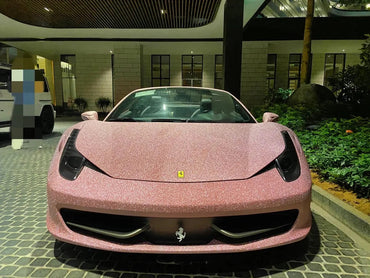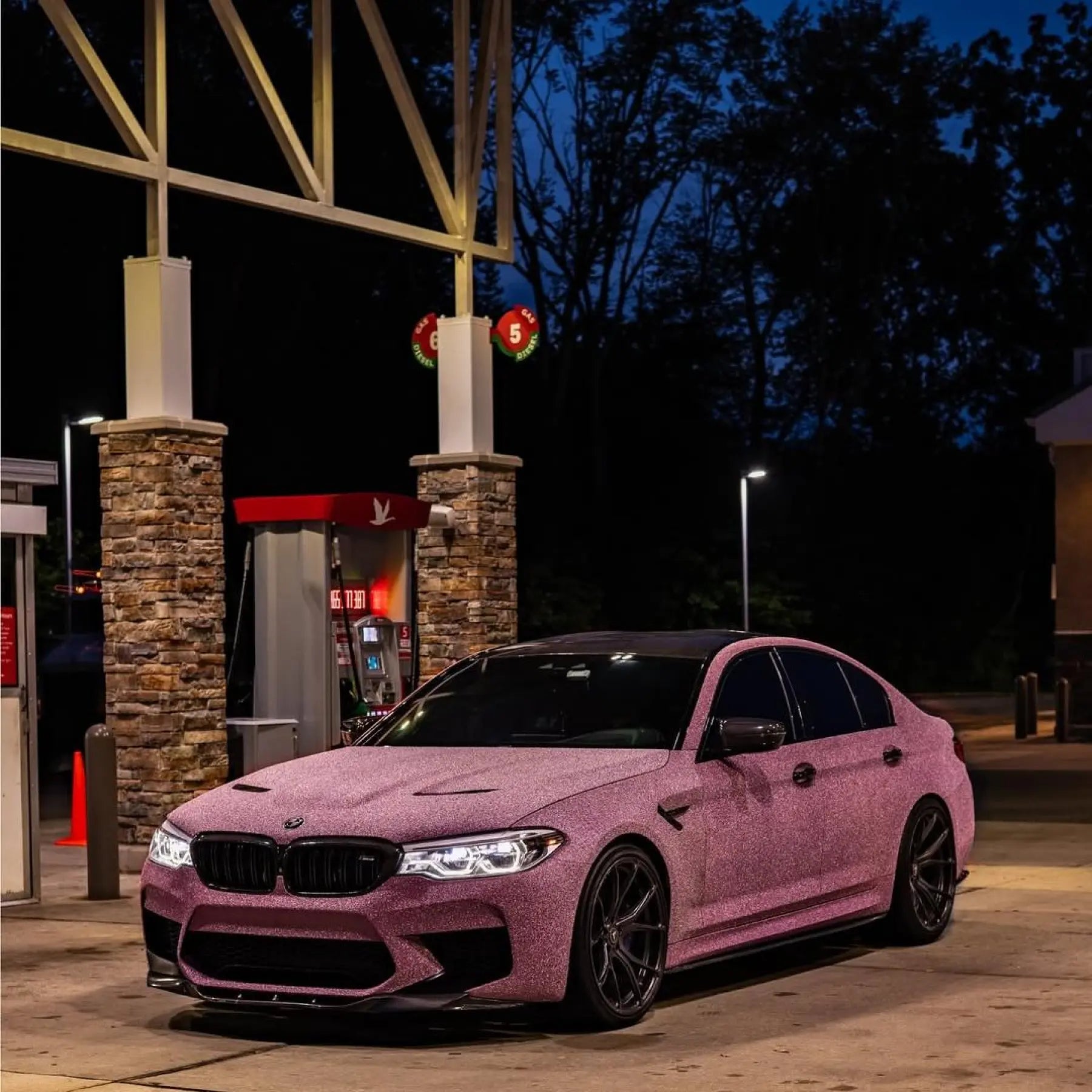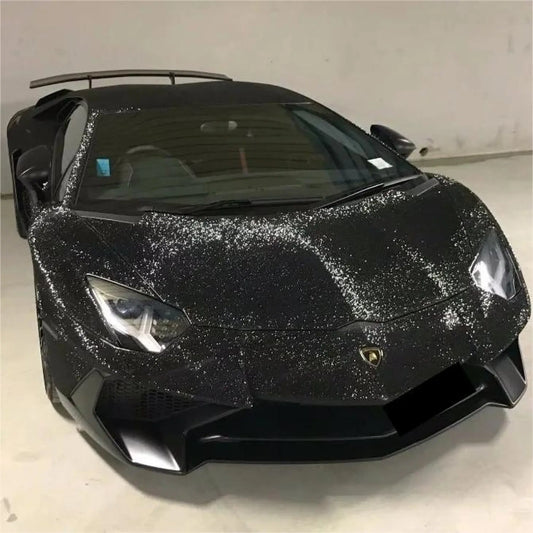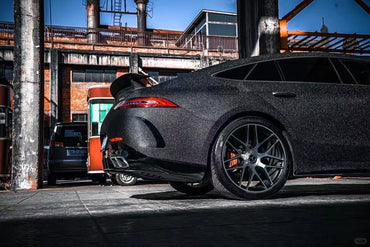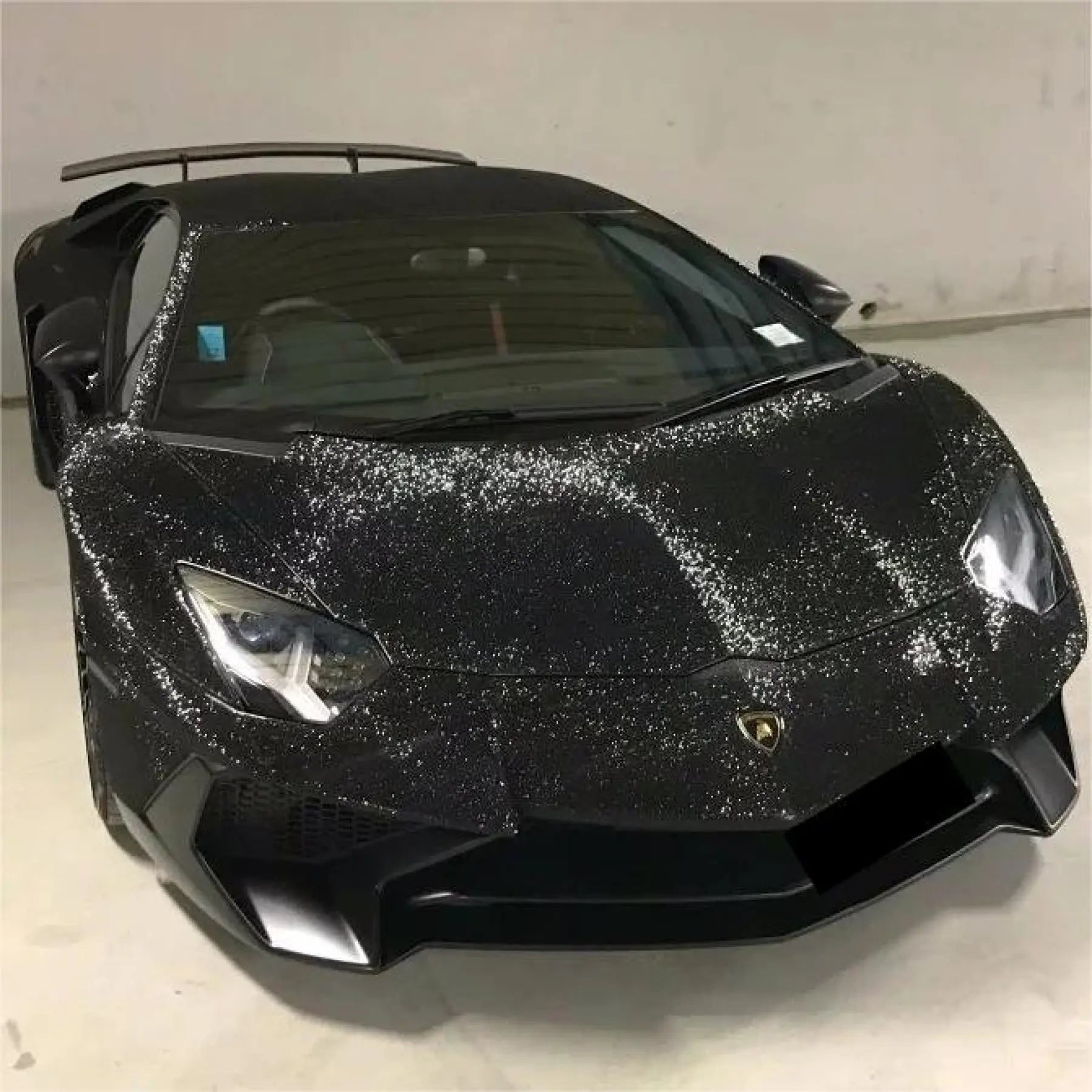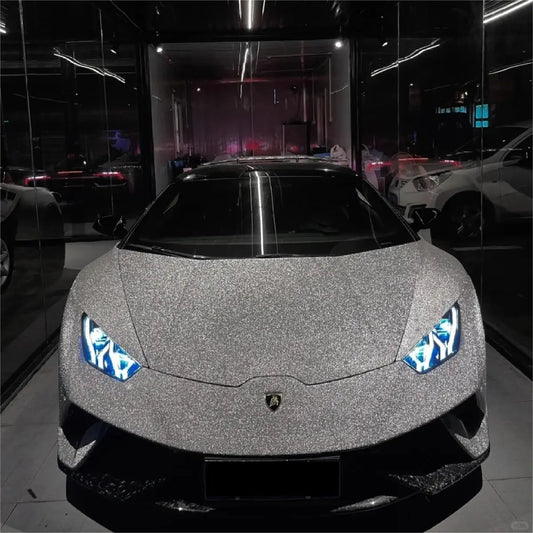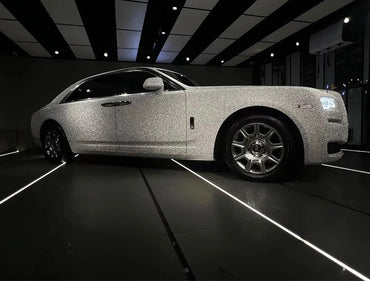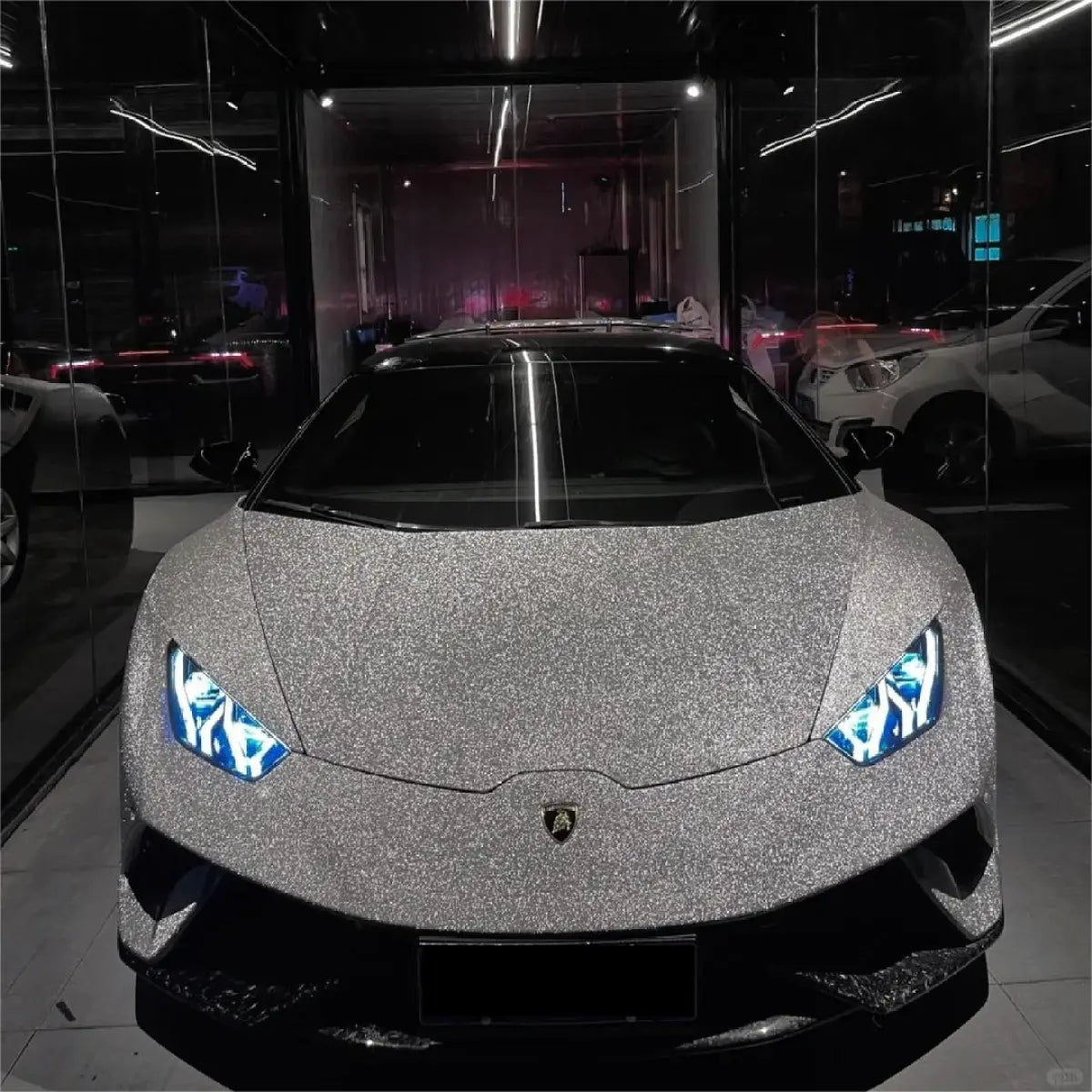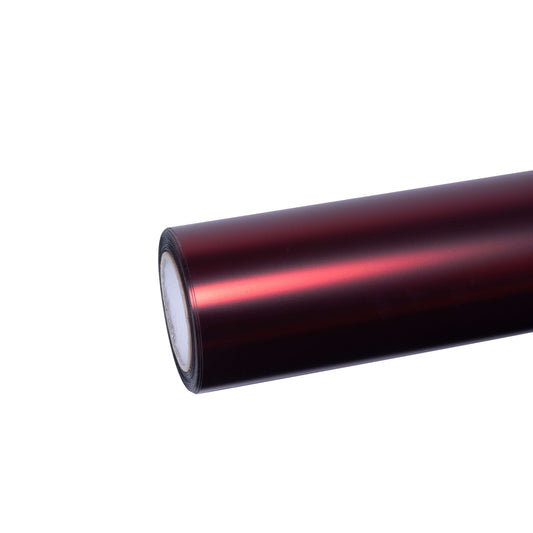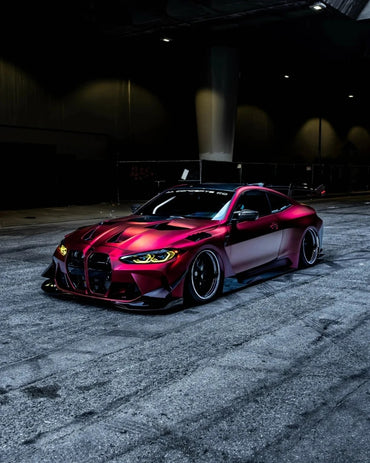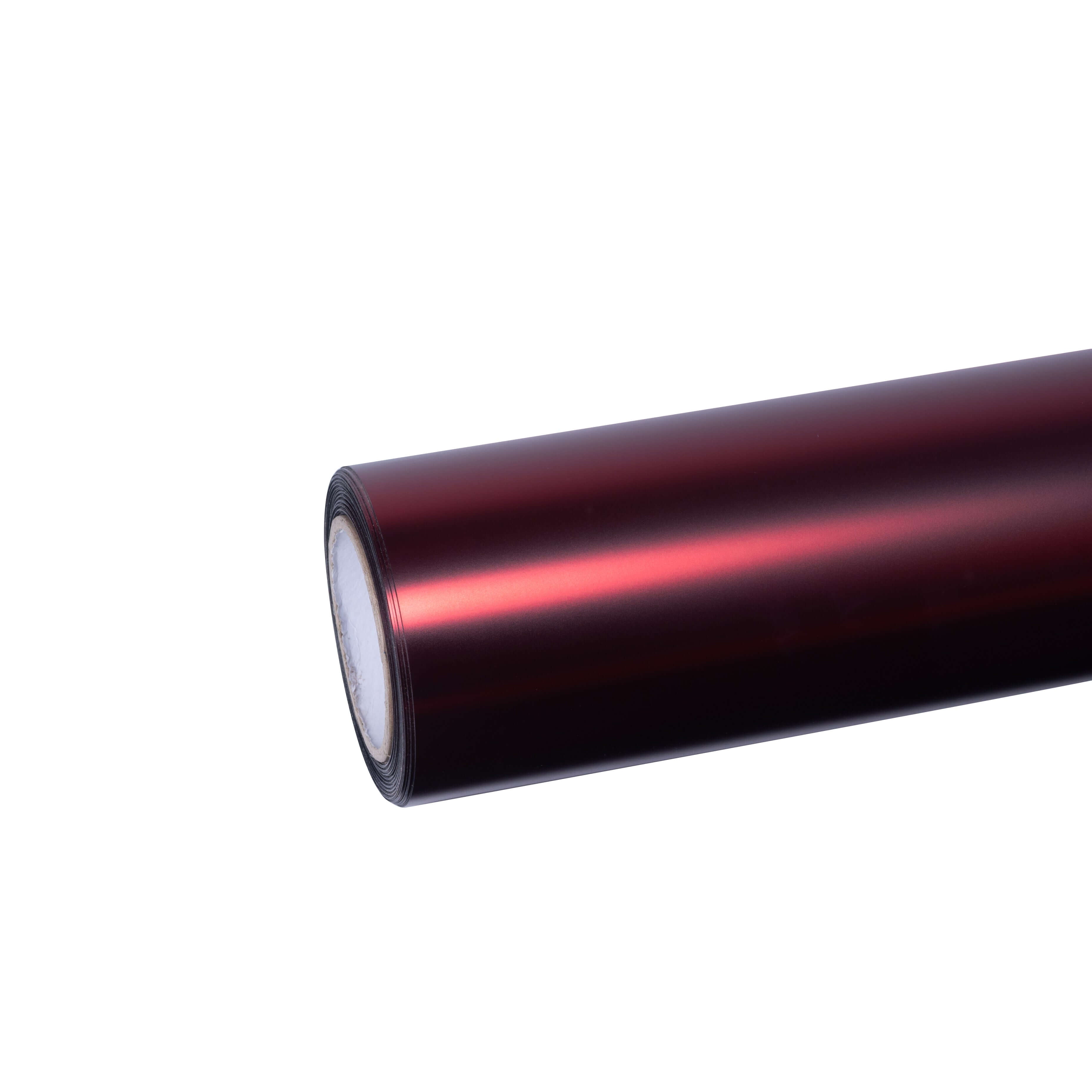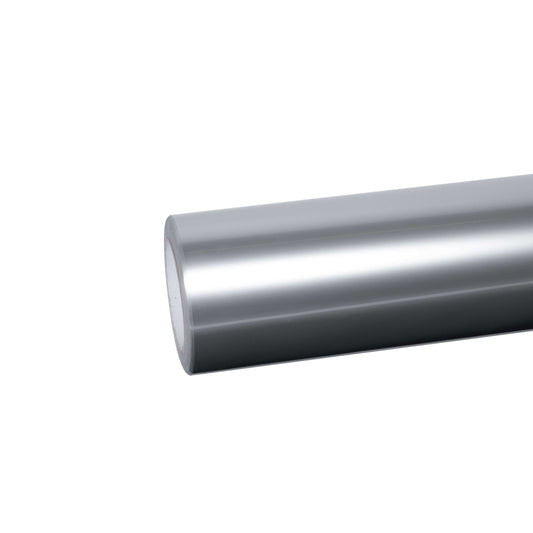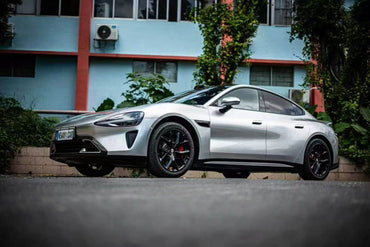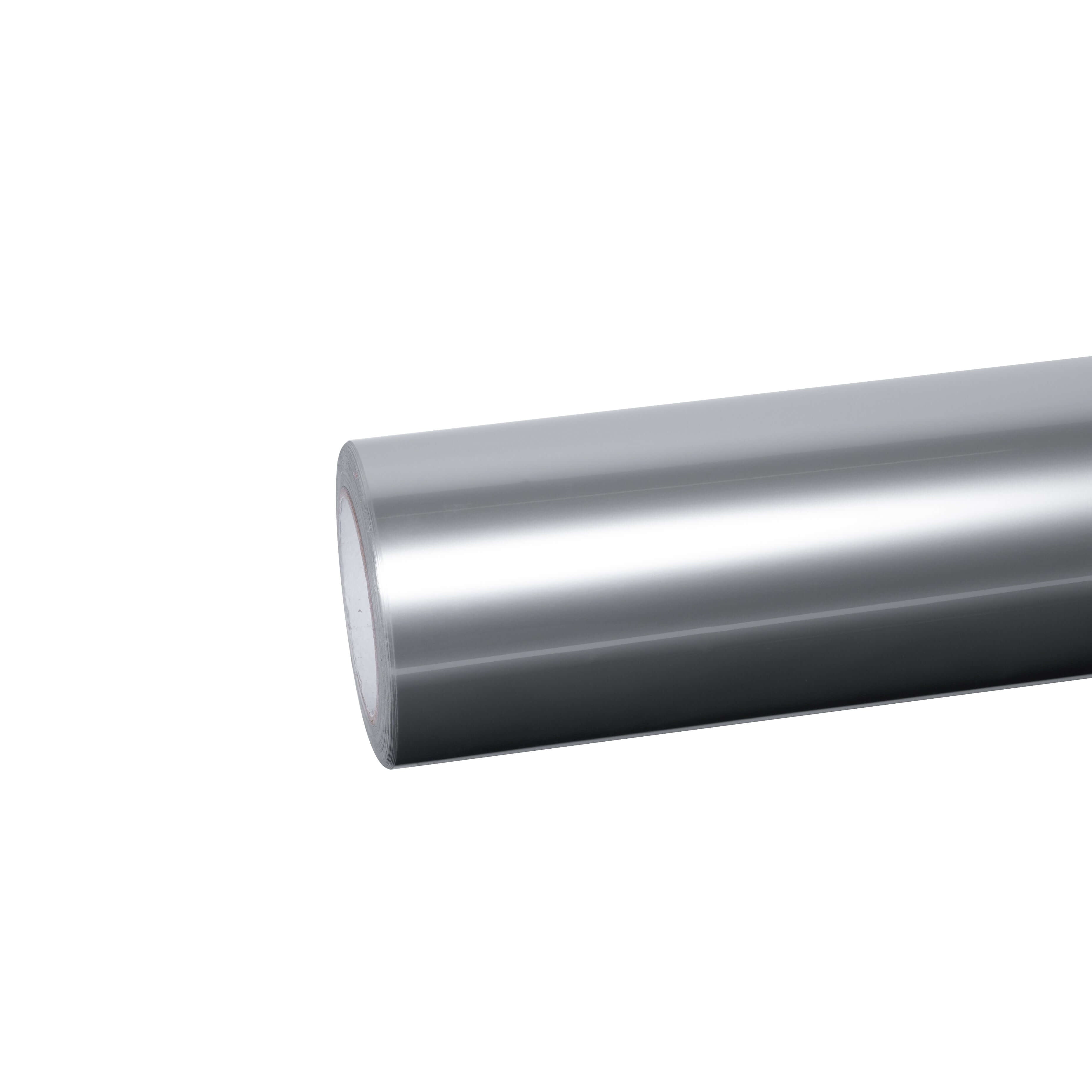When you invest in a premium vinyl wrap or paint protection film, maintaining that showroom shine becomes a top priority. Whether you've customized your vehicle with our Rainbow Laser vinyl wrap, protected it with colored PPF, or gone bold with a liquid chrome wrap, proper car care ensures your investment lasts for years.
Why Proper Washing Matters for Wrapped Vehicles
Vehicle wraps, whether vinyl or polyurethane-based paint protection film, are sophisticated materials engineered to withstand environmental challenges. However, they're not invincible. Understanding the composition of these materials helps explain why proper washing techniques are crucial.
Modern vinyl wraps consist of multiple layers working together—from the colored polyvinyl chloride film to the pressure-sensitive adhesive that bonds it to your vehicle. Our 3D carbon fiber wraps and metallic vinyl wraps feature advanced formulations designed for durability, but improper cleaning can compromise these protective layers.
Paint protection films like our TPU paint protection wrap are even more sophisticated, often incorporating self-healing top coats and UV-resistant polymers. These premium materials demand premium care to maintain their protective properties and optical clarity.
Environmental contaminants pose serious threats to wrap longevity:
Bird droppings contain uric acid that can etch into vinyl surfaces if left untreated. Tree sap bonds chemically with wrap materials, becoming increasingly difficult to remove over time. Road salt accelerates wrap degradation through chemical reactions. Bug splatter contains enzymes that break down vinyl polymers. UV exposure combined with accumulated dirt creates a compounding effect that fades colors and weakens adhesive bonds.
Regular washing—done correctly—prevents these contaminants from causing permanent damage. Studies show that wrapped vehicles washed bi-weekly maintain their appearance three times longer than those cleaned monthly or less frequently.
The Two-Bucket Hand Wash Method: Gold Standard for Wrap Care
Hand washing remains the safest and most recommended cleaning method for all wrapped vehicles, from ultra matte wraps to high-gloss crystal vinyl wraps. This technique minimizes the risk of scratching while ensuring thorough cleaning.
Essential Supplies for Hand Washing
Before you begin, gather these critical supplies:
Two 5-gallon buckets with grit guards - The grit guard prevents dirt from being reintroduced to your wash mitt
pH-neutral car wash soap - Specifically formulated for automotive finishes, never dish soap or household cleaners
Premium microfiber wash mitts - Ultra-soft synthetic fibers that won't scratch delicate wrap surfaces
Microfiber drying towels - Highly absorbent and scratch-free for safe drying
Soft spray nozzle - For gentle pre-rinsing without excessive pressure
Detailing spray (optional) - For quick touch-ups between full washes
Consider keeping a dedicated set of wrapping tools and cleaning supplies to prevent cross-contamination with abrasive materials.
Step-by-Step Hand Washing Process
Step 1: Choose the Right Environment
Never wash your wrapped vehicle in direct sunlight or when the surface is hot to the touch. Heat causes vinyl to become more pliable, making it vulnerable to distortion from pressure. Wrapped surfaces can reach temperatures exceeding 140°F in summer sun, at which point even gentle wiping can leave permanent marks.
Select a shaded area with ambient temperatures between 60-80°F. A garage provides ideal conditions, protecting both you and your vehicle wrap from environmental variables. If outdoor washing is necessary, choose early morning or evening hours when temperatures are moderate.
Step 2: Pre-Rinse Thoroughly
Begin with a comprehensive rinse using a standard garden hose with a soft spray nozzle. Start at the roof and work downward, allowing gravity to assist in removing loose dirt, dust, and debris. This critical step prevents abrasive particles from scratching the wrap during the wash process.
Pay special attention to wheel wells, lower panels, and areas behind mirrors where road grime accumulates. The pre-rinse should remove 60-70% of surface contaminants before you ever touch the vehicle with a wash mitt.
Step 3: Prepare Your Two-Bucket System
Fill the first bucket with clean water and install a grit guard at the bottom. This becomes your rinse bucket. Fill the second bucket with water and add pH-neutral car wash soap according to manufacturer instructions—typically 1-2 ounces per gallon. Mix gently to create suds without excessive foam.
The two-bucket method is non-negotiable for wrapped vehicles. It prevents the reapplication of abrasive particles that inevitably transfer from your vehicle to the wash mitt.
Step 4: Wash in Sections
Dip your microfiber wash mitt into the soapy water, then work on one section at a time using straight, overlapping strokes rather than circular motions. Begin at the top (roof, hood) and progress downward to lower panels, saving the dirtiest areas (rocker panels, lower doors) for last.
After washing each section, rinse the mitt thoroughly in your clean water bucket before returning to the soap bucket. You should see the rinse water becoming progressively dirtier—that's contamination being removed from your wrap rather than being ground into it.
For dual-color dream vinyl wraps or glitter sparkle car wraps with intricate patterns, use extra care along color transitions and textured surfaces where dirt tends to accumulate.
Step 5: Rinse Completely
After washing the entire vehicle, perform a thorough final rinse starting from the top. Ensure all soap residue is removed, as dried soap can leave spots and potentially degrade vinyl over time. Pay particular attention to crevices, panel gaps, and areas around door handles where soap tends to hide.
Step 6: Dry Immediately
Never allow a wrapped vehicle to air dry. Water spots contain minerals that can bond with vinyl surfaces, creating stubborn stains. Using clean, dry microfiber towels, pat—don't drag—the surface dry. Use a blotting motion to absorb water without applying excessive pressure that could disturb wrap edges or seams.
For best results, use dedicated drying towels with pile depths of at least 400 GSM (grams per square meter). These ultra-absorbent towels minimize the number of passes needed across the wrap surface.
Understanding pH Levels: Why Neutral Matters
Chemistry plays a crucial role in wrap care. The pH scale ranges from 0 (highly acidic) to 14 (highly alkaline), with 7 representing neutral. Most automotive soaps fall between pH 6-8, but wrapped vehicles demand products as close to pH 7 as possible.
Why pH-neutral cleaning is critical:
Acidic cleaners (pH below 6) can etch vinyl surfaces, causing permanent cloudiness and color fade. These products were designed for clearing brake dust and road grime from metal wheels—far too aggressive for delicate wrap materials.
Alkaline cleaners (pH above 8) break down the adhesive bonding your wrap to the vehicle surface. Over time, this leads to edge lifting, bubbling, and premature wrap failure. Many heavy-duty degreasers and industrial cleaners fall into this dangerous category.
pH-neutral soaps clean effectively through mechanical action and surfactants rather than harsh chemicals. They're formulated to lift dirt and oils without compromising vinyl integrity or adhesive bonds.
When shopping for car wash soap, look for products specifically labeled "vinyl safe," "wrap safe," or "PPF safe." These formulations have been tested on sensitive surfaces and contain no wax, petroleum distillates, or harsh solvents.
Products to Avoid: Protecting Your Investment
Understanding what not to use on wrapped vehicles is equally important as knowing proper techniques. Many common car care products can cause irreversible damage to vinyl wraps and paint protection films.
Cleaning Products That Damage Wraps
Dishwashing Soap and Household Cleaners
Despite being gentle on hands, dish soap is engineered to cut through grease using powerful degreasers. These same chemicals attack the plasticizers in vinyl that keep it flexible and durable. After just a few washes with dish soap, wraps become brittle and prone to cracking.
Solvent-Based Cleaners
Products containing acetone, mineral spirits, or other petroleum solvents dissolve vinyl on contact. This includes many tar removers, adhesive removers, and industrial degreasers. If you must remove stubborn contaminants like tree sap, use products specifically formulated for automotive vinyl.
Abrasive Compounds
Rubbing compounds, cutting polish, and scratch removers work by abrading away surface material—acceptable for hard automotive paint but devastating to soft vinyl. Even fine-grade compounds can permanently dull the finish of gloss metallic wraps or create visible scratches in matte surfaces.
Harmful Washing Tools
Automatic Brush Car Washes
The rotating brushes in automatic car washes create two problems: they retain debris from previous vehicles that can scratch your wrap, and they apply excessive pressure that can lift wrap edges and seams. Even "soft touch" brushes are too aggressive for vinyl surfaces.
Stiff Brushes and Sponges
Natural sponges contain abrasive particles and have rough surfaces that scratch wraps. Stiff-bristle brushes, even those marketed for automotive use, apply too much point pressure on vinyl. Always use microfiber materials designed specifically for automotive finishes.
Pressure Washers (When Used Incorrectly)
While pressure washers can be used safely with proper precautions, improper technique causes immediate damage. High-pressure water directed at wrap edges forcefully introduces water under the vinyl, compromising adhesive bonds and causing bubbling or peeling.
Protective Products to Avoid
Traditional Car Wax
Carnauba and synthetic waxes designed for paint contain oils and chemicals that interact poorly with vinyl. These products can leave streaky residue on matte finishes, yellowing on light-colored wraps, and accelerated UV degradation. Our ultra matte wraps are especially vulnerable to wax damage.
Petroleum-Based Protectants
Tire shine, dashboard dressings, and similar petroleum-based products cause permanent staining if they contact vinyl wraps. The silicone oils in these products are nearly impossible to remove once they've penetrated vinyl pores.
Clay Bars
Professional detailers use clay bars to remove embedded contaminants from automotive paint. However, the aggressive pulling action of clay can lift wrap edges, stretch vinyl over curved surfaces, and even tear delicate materials. This applies to all clay-based decontamination products.
Automatic Car Wash Considerations: Understanding the Risks
The convenience of automatic car washes is undeniable, but wrapped vehicle owners must carefully weigh convenience against potential damage. Not all automatic washes are created equal, and understanding the differences helps you make informed decisions.
Types of Automatic Car Washes
Touchless/Brushless Car Washes
These systems use only high-pressure water jets and specialized cleaning chemicals to remove dirt. For wrapped vehicles, touchless washes present the least risky automatic option, but they're not without concerns.
Advantages: No physical contact means no scratching or edge lifting from brushes. Quick and convenient for routine maintenance washes.
Disadvantages: Rely on harsh alkaline chemicals to compensate for lack of mechanical scrubbing. High-pressure jets (often 1,500+ PSI) can force water under wrap edges if directed improperly. May not remove stubborn contaminants as effectively as hand washing.
Soft-Touch/Cloth Brush Washes
These systems use rotating cloth strips or foam brushes to clean vehicles. While gentler than traditional bristle brushes, they still pose significant risks.
Advantages: More effective than touchless washes at removing caked-on dirt and grime.
Disadvantages: Cloth strips retain debris from previous vehicles, creating scratching potential. The rotating motion can catch wrap edges, especially around mirrors, door handles, and seams. Repeated exposure accelerates wrap wear and can cause premature fading.
Traditional Bristle Brush Washes
Avoid these completely with wrapped vehicles. The stiff nylon or polyester bristles are far too aggressive for vinyl and PPF, guaranteed to cause scratching, edge lifting, and premature wrap failure.
Making the Automatic Wash Decision
If you absolutely must use an automatic car wash, follow these critical guidelines:
Choose touchless-only facilities - Verify the wash uses no brushes, cloth strips, or physical contact systems
Inspect the facility first - Look for modern equipment, clean surroundings, and proper maintenance
Skip all protective coatings - Decline waxes, sealants, and clear coat protectants that may damage vinyl
Avoid package deals - Extra services like undercarriage cleaning use harsh chemicals and extreme pressure
Limit frequency - Use automatic washes only for emergency cleaning, never as your primary wash method
Inspect immediately after - Check all wrap edges and seams for lifting, bubbling, or water intrusion
For owners of specialty finishes like our satin chrome wraps or color-shifting vinyl, automatic washes should be avoided entirely. These premium materials require the gentle touch only hand washing provides.
The Professional Detailer Alternative
If hand washing isn't feasible and automatic washes seem too risky, consider professional detailing services that specialize in wrapped vehicles. These professionals understand the unique requirements of vinyl and PPF care, using appropriate products and techniques to maintain your wrap's appearance.
A professional wrap-specific detail typically costs $50-150 depending on vehicle size and service level—an investment that protects the much larger investment in your wrap itself.
Pressure Washing: Safe Techniques and Critical Warnings
Pressure washers offer efficient rinsing power but must be used with extreme caution on wrapped vehicles. Improper technique can cause catastrophic damage in seconds, while correct usage enhances your cleaning results.
Safe Pressure Washing Parameters
Pressure Limits: Never exceed 1,200-1,500 PSI (pounds per square inch) on wrapped surfaces. Most residential pressure washers operate at 1,300-2,000 PSI, making adjustment necessary. Professional-grade units often exceed 3,000 PSI—far too powerful for vinyl or PPF.
Nozzle Selection: Use a 40-degree wide-angle nozzle (often white or black). This disperses water pressure over a larger area, reducing point pressure on the wrap. Never use 0-degree or 15-degree nozzles (red or yellow), which concentrate water into a damaging stream.
Temperature Control: If using a hot water pressure washer, maintain temperatures below 140°F (60°C). Excessive heat softens vinyl adhesive and can cause distortion in the wrap material itself.
Distance and Angle: Maintain a minimum distance of 12-18 inches from wrap surfaces. Hold the wand perpendicular (90-degree angle) to the vehicle, never at an acute angle that could force water under wrap edges. Angling the spray creates a "water knife" effect that lifts and tears vinyl.
Critical No-Go Zones
Panel Edges and Seams: Never direct pressure toward areas where wrap edges meet or where seams join. These vulnerable points have the least adhesive surface area and will lift first under pressure.
Door Handles and Mirrors: Complex curved surfaces and tight gaps make these areas particularly susceptible to water intrusion. Use hand methods or low-pressure rinsing only.
Previously Damaged Areas: If your wrap has any existing lifting, bubbling, or damage, avoid pressure washing entirely until proper repairs are made.
Fresh Installations: Wait at least 48-72 hours after wrap installation before any pressure washing. The adhesive needs this curing time to achieve maximum bond strength.
Pressure Washing Process
If proceeding with pressure washing after understanding the risks:
- Pre-rinse the entire vehicle with a garden hose to remove loose debris
- Set pressure washer to lowest effective setting (ideally 1,200 PSI or below)
- Install the widest-angle nozzle available
- Test spray on an inconspicuous area first
- Maintain consistent 12-18 inch distance while rinsing
- Work from top to bottom in smooth, sweeping motions
- Never linger in one spot or work the spray back and forth repeatedly
- Avoid all edges, seams, and complex curved areas
For owners of our colored paint protection film, pressure washing is generally safer than on vinyl wraps due to PPF's superior thickness and adhesive strength. However, the same precautions still apply.
Handling Stubborn Contaminants: Special Techniques
Despite regular washing, wrapped vehicles occasionally encounter contaminants requiring specialized removal techniques. Quick action and proper methods prevent permanent staining or wrap damage.
Bird Droppings and Bug Splatter
These organic materials contain acids and enzymes that begin etching vinyl within hours of contact. Time is critical—remove these contaminants as soon as possible, ideally within 24 hours.
Removal Process:
- Saturate the affected area with warm (not hot) water for several minutes to soften the material
- Use a pre-moistened microfiber cloth to gently blot—never scrape or scrub—the contaminant
- Apply pH-neutral car soap and allow it to dwell for 30 seconds
- Wipe gently with a clean microfiber cloth
- Rinse thoroughly and dry
For dried or stubborn cases, create a hot soapy water compress: saturate a microfiber cloth with hot water and soap, place it over the contaminant, and allow it to sit for 5-10 minutes before attempting removal.
Tree Sap and Tar
These sticky substances require special attention but can be removed safely with proper products and technique.
Safe Removal:
- Use only vinyl-safe adhesive removers or specialized tree sap removers
- Apply product sparingly to a microfiber cloth, not directly to the wrap
- Test in an inconspicuous area first to ensure no adverse reaction
- Gently work the product over the contaminated area using minimal pressure
- Rinse immediately and thoroughly after removal
- Follow with a complete hand wash of the affected panel
Never use: Gasoline, WD-40, rubbing alcohol, or household adhesive removers, all of which can dissolve or permanently stain vinyl.
Water Spots and Mineral Deposits
Hard water leaves mineral deposits that bond with vinyl surfaces, creating stubborn white spots. Prevention through immediate drying is ideal, but spots can be removed when they occur.
Removal Method:
- Mix equal parts distilled white vinegar and distilled water
- Apply to water spots using a soft microfiber cloth
- Allow solution to dwell for 1-2 minutes
- Wipe clean with a damp cloth
- Rinse the area thoroughly
- Dry immediately
For severe water spotting, use a dedicated automotive water spot remover formulated for sensitive surfaces. Always test first on a hidden area of your crystal vinyl wrap before treating visible surfaces.
Fuel Spills
Gasoline and diesel fuel contain petroleum distillates that can permanently damage vinyl wraps and compromise adhesive bonds. Immediate action is essential.
Emergency Response:
- Blot excess fuel immediately with paper towels (disposable, no cross-contamination)
- Flush the area with large amounts of clean water
- Wash with pH-neutral soap and rinse thoroughly
- Dry completely
- Monitor the area for 24-48 hours for signs of damage (discoloration, bubbling, adhesive failure)
If any damage appears, contact your wrap installer immediately. Fuel-damaged sections often require professional repair or replacement.
Maintaining Matte and Satin Finishes: Special Considerations
Matte and satin wraps, including our popular ultra matte vinyl wraps, require modified care techniques compared to glossy finishes. Their unique texture demands special attention to preserve their distinctive appearance.
Understanding Matte/Satin Surface Structure
Glossy finishes achieve their shine through smooth, reflective surfaces. Matte and satin finishes create their appearance through microscopic surface texture that diffuses light rather than reflecting it. Any product or action that fills this texture—waxes, polishes, or excessive rubbing—destroys the matte effect, creating unwanted shine.
Critical Don'ts for Matte Finishes
Never apply traditional wax or gloss enhancers - These products specifically add shine, the opposite of what matte finishes need
Avoid aggressive buffing or rubbing - Excessive friction can burnish the surface, creating glossy spots
Don't use automated car washes - The brushes flatten surface texture, creating permanent gloss marks
Skip silicone-based products - These leave a glossy residue extremely difficult to remove
Proper Matte Wash Technique
Use the same two-bucket hand wash method described earlier, with these modifications:
- Select car wash soap specifically labeled "matte safe" or "satin safe"
- Use even lighter pressure when washing—the softer the touch, the better
- Pat dry with extreme gentleness, avoiding any rubbing or buffing motion
- Consider using compressed air to remove water from crevices rather than towel drying those areas
Restoring Matte Finish
If areas of your matte wrap develop unwanted shine from contamination or improper cleaning:
- Use a dedicated matte finish restorer product
- Apply with a soft microfiber cloth using gentle, straight motions
- Wipe off residue immediately
- Avoid over-application, which can darken the finish
For valuable wraps like specialty matte finishes, consider professional restoration services if DIY methods don't fully restore the original appearance.
Protecting Your Wrap: Beyond Basic Washing
Regular washing maintains cleanliness, but additional protective measures significantly extend wrap life and appearance.
Ceramic Coating for Wrapped Vehicles
Ceramic coatings create a semi-permanent hydrophobic layer over vinyl wraps and PPF, offering multiple benefits:
Protection advantages: Creates a barrier against UV radiation, one of vinyl's primary aging factors. Makes surfaces extremely hydrophobic, causing water to bead and sheet off. Reduces contaminant adhesion—dirt, bugs, and bird droppings wash off more easily. Enhances chemical resistance against acid rain, road salt, and industrial fallout.
Application considerations: Must use ceramic coatings specifically formulated for vinyl and PPF, not those designed for paint. Professional application recommended for best results and warranty coverage. Typically lasts 12-24 months before requiring reapplication. Can be applied to both glossy and matte finishes with appropriate products.
Quality vinyl-specific ceramic coatings cost $300-800 for professional application but can extend wrap life by 30-50% while dramatically reducing maintenance effort.
Clear PPF Over Vinyl
For maximum protection of premium wraps like our liquid chrome or dual-color designs, consider applying clear paint protection film over the vinyl wrap itself.
This multi-layer approach provides:
- Impact resistance against rock chips and road debris
- Enhanced UV protection
- Self-healing properties for minor scratches
- Easier cleaning and maintenance
While adding to initial cost, this combination offers the ultimate in both appearance and protection.
Quick Detailer Sprays
Between full washes, vinyl-safe quick detailer sprays help maintain appearance:
- Lightly mist on one panel at a time
- Wipe gently with a clean microfiber cloth
- Perfect for removing light dust, fingerprints, and fresh water spots
- Can be used as drying aid after washing to enhance water beading
Keep a bottle of wrap-safe quick detailer and microfiber cloths in your vehicle for emergency spot cleaning.
Parking and Storage Strategies
Environmental protection extends wrap life significantly:
Ideal conditions: Covered parking (garage or carport) whenever possible. Shaded parking areas when covered parking unavailable. Avoid parking under trees (sap, bird droppings). Distance from industrial areas (airborne contaminants).
Long-term storage: Clean and dry vehicle thoroughly before storage. Apply fresh coat of ceramic coating or sealant. Cover with breathable car cover if storing indoors. Avoid plastic or non-breathable covers outdoors (trap moisture).
Washing Frequency: Finding the Right Balance
How often should you wash your wrapped vehicle? The answer depends on multiple factors, but general guidelines help optimize appearance while minimizing unnecessary wear.
Standard Washing Schedule
Every 2 weeks: Ideal frequency for most wrapped vehicles in moderate climates and normal driving conditions
Weekly: Recommended for vehicles regularly exposed to harsh conditions (coastal salt air, industrial areas, construction sites)
Monthly minimum: Even garage-kept vehicles accumulate enough environmental contamination to require monthly washing
After specific events: Following rain or snow (road salt removal). After highway driving (bug splatter removal). Following exposure to industrial fallout or construction dust. Whenever bird droppings or tree sap appear.
For vehicles with colored paint protection film, slightly less frequent washing is acceptable due to PPF's superior environmental resistance, but regular maintenance remains important.
Signs Your Wrap Needs Washing
Don't rely solely on calendar schedules. Watch for these indicators that washing is needed:
- Visible dirt accumulation, especially on lower panels
- Loss of hydrophobic properties (water no longer beads)
- Dull appearance compared to normal finish
- Visible water spotting
- Accumulation of road film or grime
Over-Washing Concerns
While regular washing is important, excessive washing can accelerate wrap wear through accumulated mechanical action. Hand washing twice weekly is generally unnecessary unless the vehicle encounters particularly harsh conditions.
Between full washes, spot cleaning with quick detailer spray addresses minor contamination without subjecting the entire wrap to washing friction.
Troubleshooting Common Wrap Problems
Even with proper care, wrapped vehicles occasionally develop issues requiring attention.
Edge Lifting
Symptoms: Visible gaps between wrap and vehicle surface, typically along panel edges or seams
Causes: Water intrusion from pressure washing or automatic car washes. Adhesive degradation from age or chemical exposure. Poor initial installation technique.
Solutions: Minor lifting (under 1/4 inch): Use vinyl wrap edge sealer. Moderate lifting: Return to professional installer for heat re-application. Severe lifting: May require panel rewrap.
Bubbling or Wrinkling
Symptoms: Raised bubbles or wrinkled areas under the wrap surface
Causes: Water intrusion under the vinyl. Air pockets from initial installation. Improper washing when surface was hot.
Solutions: Small air bubbles: Can sometimes be worked out by pressing toward nearest edge. Water bubbles: Require professional attention to dry and reseal. Wrinkles from heat exposure: Usually permanent, requiring section replacement.
Color Fading
Symptoms: Noticeable color change, typically lightening of the original shade
Causes: Prolonged UV exposure without protection. Use of harsh chemicals or incorrect cleaning products. Natural aging of vinyl materials.
Solutions: Prevention: Regular cleaning, ceramic coating, covered parking. Restoration: Professional color restoration services for minor fading. Replacement: Severely faded wraps require replacement.
Adhesive Residue
Symptoms: Sticky residue on wrap surface, often from stickers or tape
Causes: Temporary labels or tape applied to wrap. Fuel spills that weren't cleaned immediately.
Solutions: Use isopropyl alcohol (70% concentration) on a microfiber cloth. Apply sparingly, wipe gently, rinse immediately. Test in hidden area first. Never use acetone or harsh solvents.
Understanding Wrap Warranties and Proper Care
Most professional wrap installations include warranties covering manufacturing defects and installation quality. However, these warranties typically include specific care requirements that must be followed to maintain coverage.
Common Warranty Requirements
- Hand washing only (automatic car washes void many warranties)
- Use of pH-neutral, vinyl-safe cleaning products
- Regular cleaning maintenance (typically bi-weekly minimum)
- Immediate attention to environmental contaminants
- Professional removal when wrap replacement is needed
- Documentation of care and maintenance practices
Review your wrap warranty carefully and maintain records of your cleaning practices. Photograph your vehicle regularly to document its condition over time.
Professional Inspection and Maintenance
Consider annual professional inspections of your wrapped vehicle, especially for high-value installations. Professional wrap technicians can identify potential issues before they become serious problems:
- Edge seal degradation requiring preventive treatment
- Early signs of adhesive failure
- UV damage requiring protective measures
- Areas requiring professional cleaning or restoration
The cost of preventive maintenance is minimal compared to premature wrap replacement due to neglected care.
Seasonal Considerations for Wrap Care
Different seasons present unique challenges for wrapped vehicles, requiring adjusted care strategies.
Winter Care
Challenges: Road salt and brine solutions. Ice and snow accumulation. Reduced washing opportunities. Harsh weather exposure.
Strategies: Wash more frequently to remove salt (weekly if possible). Use heated garage or indoor wash facility when available. Never scrape ice directly from wrap—use de-icing spray and patience. Rinse undercarriage thoroughly to remove accumulated salt.
Summer Care
Challenges: Intense UV exposure. High temperatures affecting vinyl pliability. Bug splatter and tree sap. Water spots from sprinkler systems.
Strategies: Park in shade whenever possible. Wash early morning or evening, never in direct sun. Remove bug splatter and sap immediately, before heat bakes them on. Use distilled water for final rinse to minimize water spotting.
Spring and Fall
Challenges: Pollen accumulation. Increased precipitation and water spotting. Temperature fluctuations. Tree sap and leaf debris.
Strategies: Maintain bi-weekly washing schedule. Address pollen promptly (rinse frequently). Remove fallen leaves before they stain. Monitor for any winter damage requiring repair.
Sample Kits and Professional Resources
For those new to wrap care or looking to try our products, our sample kits offer an affordable way to experience Sailifilm quality before committing to a full vehicle wrap. These samples help you make informed decisions about color, finish, and material type.
Choosing the Right Wrap
Consider these factors when selecting your wrap:
Finish type: Gloss for maximum shine and easiest maintenance. Matte/satin for unique appearance but requires extra care. Chrome and metallic for maximum impact and moderate maintenance.
Usage environment: Daily drivers benefit from PPF's enhanced durability. Show vehicles can opt for delicate specialty finishes. Work vehicles need highly durable, easy-clean options.
Maintenance commitment: Assess honestly how much time you'll dedicate to care. Some finishes require more attention than others. PPF generally requires less careful handling than vinyl wraps.
Browse our complete collection of car vinyl wraps to find the perfect match for your vehicle and lifestyle. From practical protective films to head-turning specialty finishes, proper care ensures your investment delivers years of satisfaction.
Conclusion: Protecting Your Wrapped Vehicle Investment
A quality vehicle wrap represents a significant investment in your vehicle's appearance and protection. Whether you've chosen our metallic vinyl wrap for subtle elegance, rainbow laser series for maximum drama, or TPU paint protection for ultimate durability, proper washing and maintenance are essential to maximize your return.
The fundamentals of wrap care are straightforward: regular hand washing with pH-neutral products, immediate attention to contaminants, and avoidance of automatic car washes and harsh chemicals. These simple practices, consistently applied, can extend your wrap's lifespan from 3-4 years to 6-7 years or more.
Remember that every minute spent on proper care prevents hours of future restoration work or premature replacement costs. Treat your wrapped vehicle with the same attention you would a prized possession—because that's exactly what it is.
Key Takeaways:
✓ Hand wash every 2 weeks using the two-bucket method
✓ Use only pH-neutral, vinyl-safe cleaning products
✓ Avoid automatic car washes, especially those with brushes
✓ Remove environmental contaminants immediately
✓ Never use waxes, polishes, or petroleum-based products
✓ Pressure wash only with proper technique and limitations
✓ Consider professional ceramic coating for enhanced protection
✓ Maintain covered parking whenever possible
For more information about our complete range of vehicle wrap solutions, explore our best sellers collection or contact our team for personalized recommendations. Your wrapped vehicle's appearance is worth the extra care—and with these techniques, maintaining that showroom finish has never been easier.
External References:
